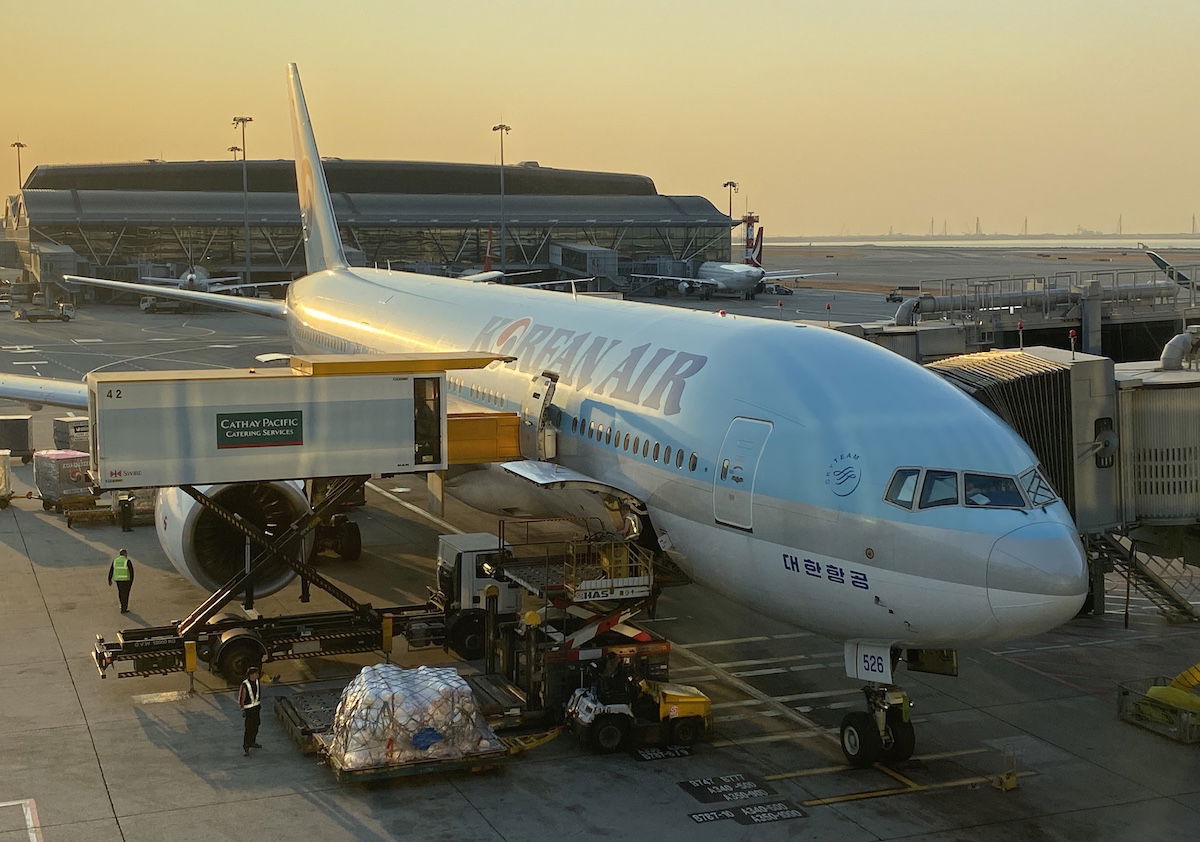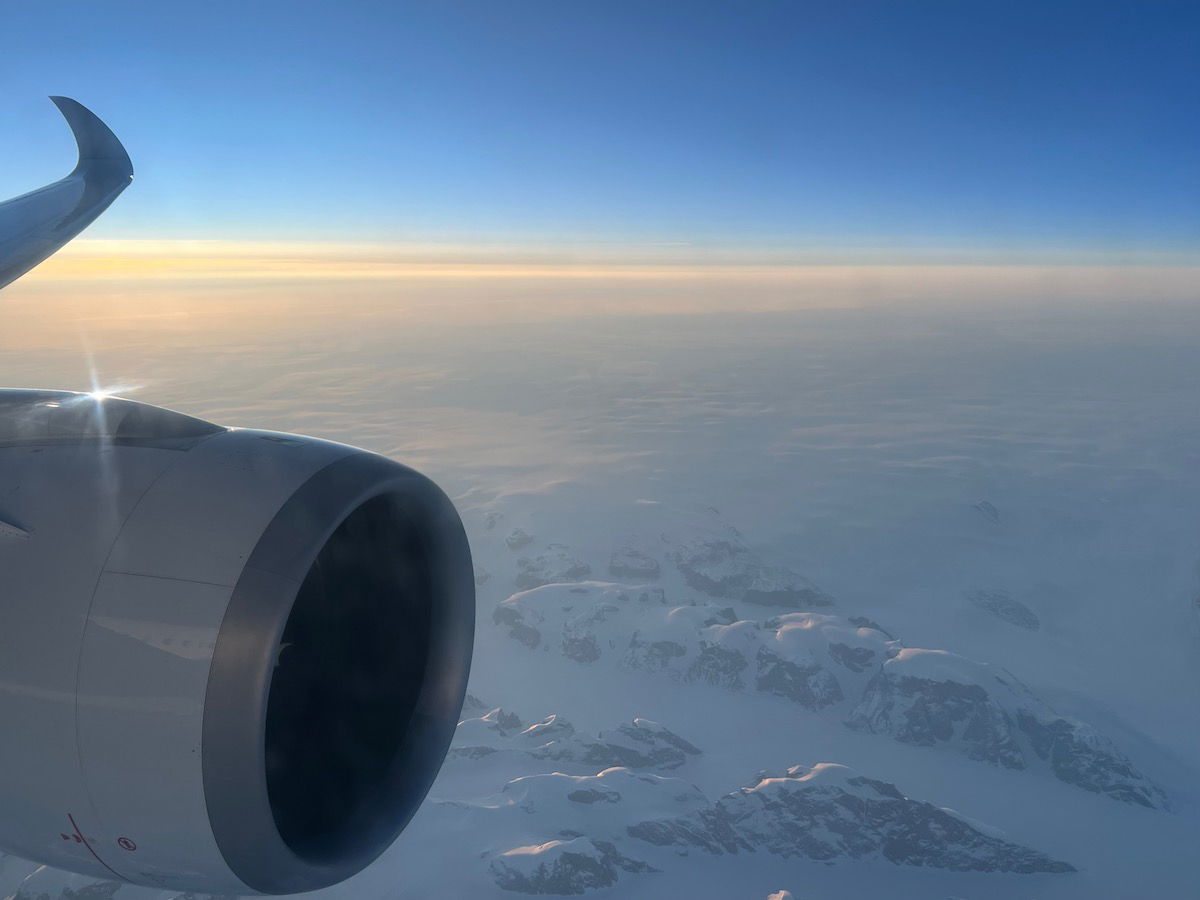Here’s something we don’t often see addressed, even though it seems like it should be of concern…
In this post:
Korea’s new flight attendant radiation limitations
Korean’s nuclear safety agency has just added new regulations that are intended to minimize the exposure that flight attendants have to cosmic radiation. Flight attendants on international long haul flights are subjected to the most radiation exposure, so that’s where limits are being put in place.
Specifically, Korean airlines will have to roster flight attendants to ensure that they aren’t being exposed to more than six millisieverts (mSv) on an annual basis. Since there’s the most exposure to radiation on long haul flights, airlines may have to roster flight attendants differently, especially if they primarily operate long haul flights.
Furthermore, the new law mandates that flight attendants receive regular education on radiation, and undergo health check ups.
These new regulations are already in effect, and any airline found to be violating this new rule could face a fine of of up to six million won ($4,638). I would assume that fine is per incident, or else that doesn’t seem very high.

I’m surprised this concern isn’t more common
While this isn’t a topic that I’m very knowledgable on, I’m surprised that the subject of airline crews being exposed to radiation isn’t discussed a bit more, and that we don’t have more laws regulating this.
Most studies I’ve seen put airline crews at much greater risk for cancer, particularly melanoma and other skin cancers. Yet often it seems that discussions about this stop short of actually doing anything that could impact change.
Science is far from my strong suit, so with Korea’s new law, I was curious just how much exposure six mSv would be, since that’s the new limit for crew. Based on my searches online, it appears that six mSV is the typical radiation doses received by flight attendants often flying long haul polar routes.
Since that’s right at the limit of Korea’s new regulations, I suppose that this could impact some of the flights that certain crew members are able to take.

Bottom line
Korea has just added a new law that limits the amount of radiation that flight attendants can be subjected to. Airlines have to ensure that flight attendants aren’t subjected to more than six millisieverts (mSv) on an annual basis.
Based on my understanding (and someone please correct me if I’m wrong), that’s around as much radiation as the average flight attendant working long haul flights could be subjected to. So this could cause airlines to change how crews are rostered, perhaps mixing more short haul and long haul flying.
What do you make of Korean’s new law limiting crew radiation exposure?





Sorry if this is a really silly question but would wearing sunscreen protect you against the radiation? Isn't that what sunscreen is made for or is this radiation different then UV radiation?
We are not talking about UV, however as a pilot I do wear a light sunscreen in the flight deck. Ur getting a really good dose on polar routings even though during the winter you might be in the darkness the entire flight!
The 6 mSv limit in flight is unjustifiably low. Even when being on the safe side, 20 mSv/year is more reasonable. A single chest CT scan is 6 mSv. An astronaut spending 6 months on the ISS receives 70 mSv. Radiation workers are permitted 50 mSv/year.
Cosmic radiation is a non-issue compared to the radiation received from smoking, yet the Korean Aviation Authorities aren’t regulating that.
In short, that new rule doesn’t make sense.
The annual limit for radiation workers has actually been lowered to 20 mSv for category A and for category B it is 6 mSv (the reason for the airline to set the limit at 6). An employer also has a legal responsibility to even out the exposure amongst its staff.
@Fred
Naw Virgil knows best, completely uninformed, and he knows it….but he’s got strong opinions!
Several of those long-term studies do point out that there is a very likely effect from leisure activities associated with the occupation (crew on those twice-weekly long-haul flights to sunny holiday destinations tend not to sit inside all day) and a quite likely one from the cosmic radiation, but separating out the two is tricky, especially for long-term studies using data from the days when most people were not aware of risk from sun exposure.
Those studies were also WAY before the prevalence of trans polar flights which are the real flights in question here. Normal long haul flying in terms of ionizing radiation are no different than multiple short haul, the issue that leads to however is constant circadian rhythm disruption which also increases illness.
@Lucky
https://xkcd.com/radiation/
I'm wondering if the incentive here isn't to "schedule less", rather it would be to increase shielding on the plane to reduce radiation for flights. It would likely add weight, so this needs to be regulatory than random goodwill from KAL.
I can't see lead being added to the roofs of 'planes !!
It’s not “schedule less”, just a limitation on trans polar flights because that’s where you will receive the dosages relevant to this discussion.
Lots of typos. Is hiring an editor from Fiverr or Upwork prohibitively expensive?
Where ? Elaborate
My sister died of skin cancer without ever having spent a day in the sun. She was a senior flight attendant for a European airline who exclusively flew trans polar trips. At the time of her death, the airline had started a (non related) study on the exposure of crew members exposed to excessive radiation. There is no proof, I don't know where that study went...
I had a friend who was a flight attendant at ElAl, and she mentioned how she couldn't too many flights on the TLV-LAX route since it was restricted due to the amount of radiation exposure (since this flight flies over the north pole).
1000 μSv = 1 mSv
FRA-ICN is about 54 μSv so you could do about 55 FRA-ICN turnarounds in 1 year.
After about dozen or so years of cockpit-seat sun exposure doing fairly regular Florida and Nassau turns from the Northeast, I had a mole on my earlobe change shape and darken. It turned out to be a melanoma, which I luckily had excised before it had a chance to grow and metastasize. The risk is not just academic, but real.
In Germany we have a law to limit airline Crew radiation exposure for many many years.
The max yearly amount of exposure is 20 mSv. Your life long max exposure is 400 mSv.
Crews have to get a special training every year about radiation exposure. All information are being saved for years and you can check your specific exposure for every year.
On a flight from FRA-LAX the exposure is about 65 μSv.
What about passengers, especially those who travel frequently?
Passengers do more choosing so it is deemed to be their responsibility.
If employer requires flying, can change job.
More surprising would be if this is really only Flight Attendants rather than all Flight Crew.
Why should pilots be any different (or does the hardware above their heads provide relevant protection?)
There are many laws pertaining to work related health concerns, usually regulated by OSHA. Personal travel is a personal decision though the risk should be better disseminated. When we did a 13 hour plane trip with a (wife) possible pregnancy I planned to take routes that would not be polar.
What happens when you approach life-time limit?
Does switching to short-haul reduce the rate sufficiently?
Does the airline have to find one a desk-job?
Or does one get made redundant?
Interesting change. I wonder how they will measure this, practically speaking.
I am a radiation oncologist (doctor that uses radiation to treat cancer and other diseases).
The limits for my staff (myself included) is 50 mSv per year (lower for those who are pregnant). We all wear radiation dosimeter badges to make sure that this is carefully cataloged. It requires a fair amount of work to keep track of, so I doubt that any...
Interesting change. I wonder how they will measure this, practically speaking.
I am a radiation oncologist (doctor that uses radiation to treat cancer and other diseases).
The limits for my staff (myself included) is 50 mSv per year (lower for those who are pregnant). We all wear radiation dosimeter badges to make sure that this is carefully cataloged. It requires a fair amount of work to keep track of, so I doubt that any airline would go to the trouble of actually documenting to that degree, especially for a dose as low as 6 mSv.
Here is actually a great representation of various comparison doses for radiation: https://xkcd.com/radiation/
Most crew members will probably receive far below 6 mSv per year. For example, based on this analysis of various flight routes, JFK-HKG would yield a max of around 100 microsieverts of radiation per leg. 6 millisieverts = 6000 microsieverts, so that would be 60 JFK-HKG one way's, or about 2.5 round trips per month x 12 months. Definitely possible to bump up against that.
Measurement based on pre-calculated dosage per scheduled route.
Yes, diversions happen.
So the amounts may not be accurate enough for detailed scientific research, but perfectly adequate for regulation.
After all, nobody knows whether the appropriate limit should be 6mSv, 5, 7, or the 50 which applies to you - the effect is presumably continuous and the idea is to keep the chance of harm below some small percentage.
P.S. That is a...
Measurement based on pre-calculated dosage per scheduled route.
Yes, diversions happen.
So the amounts may not be accurate enough for detailed scientific research, but perfectly adequate for regulation.
After all, nobody knows whether the appropriate limit should be 6mSv, 5, 7, or the 50 which applies to you - the effect is presumably continuous and the idea is to keep the chance of harm below some small percentage.
P.S. That is a great chart - particularly Day hiking in Colorado = 4x living near coal plant = 12x living near nuclear plant (or eating a banana)
Sorry, you can't bid on that route, you have too many millisieverts. I'm sure that will make the senior attendants very happy.
ALPA is smiling in the corner.
ALPA couldn’t care less about Korea placing a restriction on their Flight Attendants.
@Dan77W
Wait till ALPA wants the same in North America.
@Eskimo
FAR 117 rules, normal scheduling practices and minimal amount of polar routes (which is where most of your radiation dosage applicable to this discussion would occur, you could count them on 1 hand) means 99.9999% of US pilot wouldn’t reach a fraction of this threshold. Again it’s not even on ALPA’s radar and if it was at one point they’d spend 5 minutes discussing, then realize it might effect 0-10 pilots a year and...
@Eskimo
FAR 117 rules, normal scheduling practices and minimal amount of polar routes (which is where most of your radiation dosage applicable to this discussion would occur, you could count them on 1 hand) means 99.9999% of US pilot wouldn’t reach a fraction of this threshold. Again it’s not even on ALPA’s radar and if it was at one point they’d spend 5 minutes discussing, then realize it might effect 0-10 pilots a year and as such isn’t worth a dime in lobbying effort. But please continue to discuss a topic you have no operational nor even theoretical knowledge about.
This is a good change. Worker's health needs to be protected.